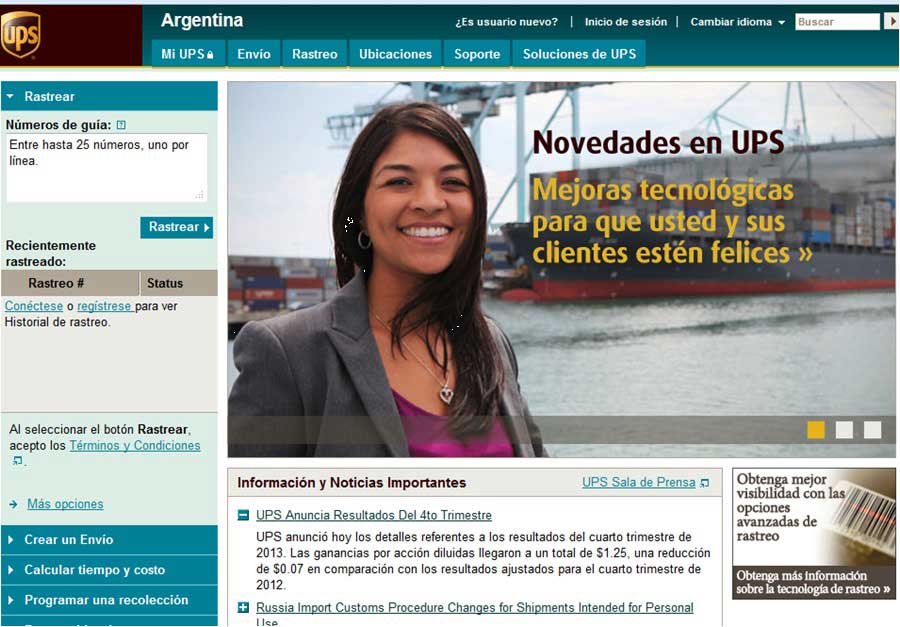The economic potential of online communication is $45 trillion, according to research by Common Sense Advisory. Clearly, the Internet is rich with opportunities to sell your products globally.
According to that same study, however, if you have only an English version of your website, you're limiting yourself to one-third of that revenue.
Your website is your storefront to the world. If you want to reach targeted locales around the globe, you'll want to consider localizing your website to meet your audiences' unique needs—and there's more to doing so than translating your copy.
1. Create a positive user experience with custom layout and navigation
Various cultures may have unique website design preferences based on what they're used to seeing online. Creating a positive user experience for your global audiences includes adjusting your website's structure to fit their needs.
Consider, for example, Coca-Cola. No two of the company's many websites are exactly alike (and there's good reason for that).
If we compare the United States version on the left with the Pakistan version on the right, you can notice differences in layout, navigation, and even the amount of content shared.
But how do you know which layout is best for each locale?
To start, you can look at other websites in your target regions as examples. There are also some widely studied cultural adaptation theories that may help; for instance, a handy guide (PDF) was put together in 2000 by Aaron Marcus (a user interface and design consultant) and Dr. Emilie Gould (a communications studies professor at State University of New York at Albany). It's just one of the many tools available for marketers, Web developers, and designers alike.
The language you go into could also affect your website design structure, because some languages are read differently. For example, Arabic is read right to left, so your design may need to be re-oriented accordingly.
2. Hit the mark with multimedia
Another important factor in localizing your website includes multimedia content.
Picturing people of the same nationalities as the target culture in your multimedia content can make your messages more relatable and therefore it can elicit a greater response.
It's also a good idea to research cultural norms to better understand how to portray people in your content. For instance, images of people putting their feet up on coffee tables to relax may not be good for a website in India or the Middle East, where feet are considered unclean.
Other areas that warrant attention include gender roles. Using a woman instructor in your e-learning videos may be less effective in countries, such as Saudi Arabia, where men hold the more authoritative positions.
The ratio of multimedia to text deserves careful attention, too. People in Japan, for example, typically prefer more images over text, while other cultures, such as inhabitants of Scandinavian nations, are generally drawn to the opposite.
It's all about finding the right balance to entice and engage your audiences.
3. Share locale-specific information that's on point
Just as with all other global marketing endeavors, it's important that your website's content have a local feel. You likely won't reference American football on the Brazil version of your website. You may have also adapted your products for these markets, so your information will adjust as well.
Use your website as a tool to publicize your locale-specific marketing campaigns so you not only look but also sound like a local business, because only then can you maximize sales.
Accordingly, you want in-country, native-speaking linguists to do your translations. They can ensure that local slang, cultural references and other communication aspects resonate with your audiences.
4. Paint the right picture with color choices
Colors can have different meanings in different cultures. Look at your website's color scheme and determine whether changes are required to ensure your audiences don't perceive it—and your brand—negatively.
For instance, brown is considered an earthy color in the United States and in the Middle East. However, in Asian cultures it symbolizes mourning, and in Latin America it's deemed disapproving (and can discourage sales). UPS (which is known for its brown color) uses brown only for the logo for its website in Argentina; the dominant color of that site is blue, which tends to be a universally appealing color:
Selecting colors for website localization can be tricky, though. Just because your brand colors symbolize a certain feeling or meaning in a certain locale doesn't necessarily mean you have to switch them. It really depends on your target cultures' conceptions. Case in point: black in the United States is often associated with death; however, studies have shown that black is very effective in the US for websites featuring luxury products.
Another area to pay attention to is the amount of color you use on your website. Research finds that compared with Western and European cultures, Asians tend more to gravitate toward colorful websites—as you can see in the Starbucks example below. The United States version has significantly less color than the Japanese version.
* * *
These are, of course, just some of the many considerations for website localization, which is all about creating a local online experience for each of your target regions so you can make the most impact and increase sales.
Do you have any other areas to add?







